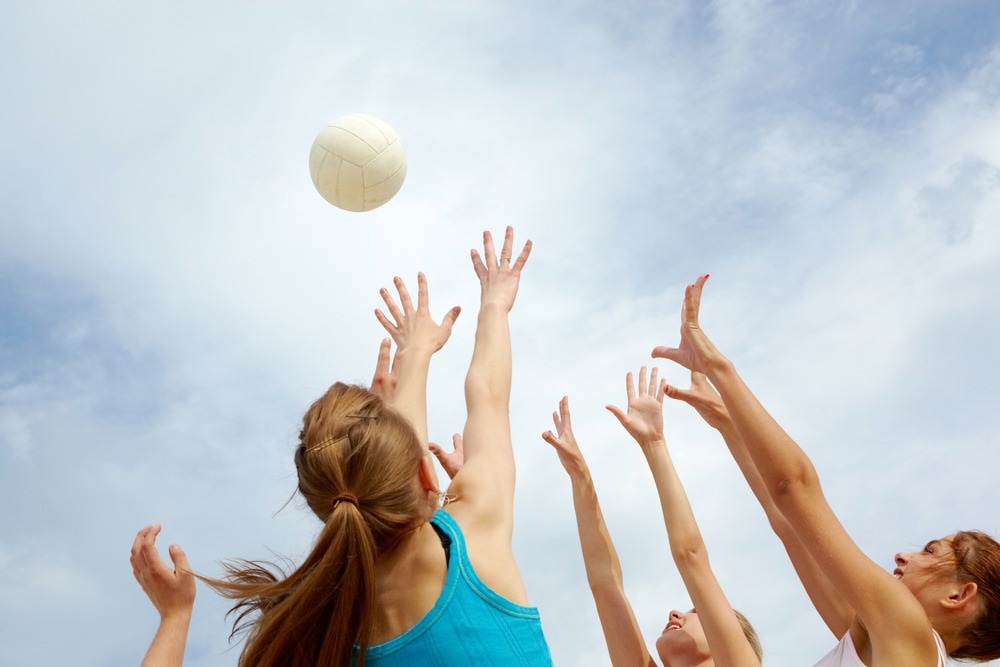A recent Scientific Reports study elucidated the patterns of physical activity participation and discontinuation based on puberty timing during adolescence.
 Study: Puberty timing and relative age as predictors of physical activity discontinuation during adolescence. Image Credit: Pressmaster/Shutterstock.com
Study: Puberty timing and relative age as predictors of physical activity discontinuation during adolescence. Image Credit: Pressmaster/Shutterstock.com
Background
The intensity of physical activity markedly declines in childhood and adolescence, particularly after the age of 10 years. Participation rate disproportionately changes across various types of physical activity. Previous studies have indicated that adolescents are more inclined to participate in individualistic physical activities than team-based activities.
Sustenance in participation in different types of physical activities also depends on many factors, such as availability, opportunity, and cost. For instance, organized or structured activities require a coach, which increases the cost to participate or sustain in these activities for a prolonged period.
In contrast, unorganized or unstructured activities do not require an instructor or coach and increase the probability of long-term sustenance of these forms of physical activities. However, more factors drive sustainability and change in physical activity participation, which requires further research for proper understanding.
The majority of available studies are limited by short follow-up periods. In addition, these studies have examined a narrow set of physical activity types. To date, no studies have determined the main predictors of sustainability or change in physical activity participation.
However, it is imperative to identify the types of physical activities more likely to be continued or discontinued over a prolonged period. This information will help develop effective interventions to improve adolescent physical activity participation.
A previous study has pointed out that the onset of puberty predicts changes in physical activity participation during adolescence. Puberty is characterized by biological maturation. Puberty-timing is associated with many biological functions related to strength, weight, and height, and psychological changes.
Compared to boys, same-age girls are more inclined to drop out from participating in different physical activities after puberty. It has been observed that earlier-maturing girls are less active due to changes in body composition, lower self-esteem, and feelings of self-consciousness.
More research is required to understand the associations between puberty timing and physical activity discontinuation in the context of unorganized and individual physical activity participation. Age differences between individuals within the same group could be another predictor of physical activity participation.
About the study
The current study focussed on investigating the gender-specific longitudinal involvement, uptake rates in various types and contexts of physical activity, and re-engagement rates among adolescents between the ages of 11 and 17 years. This study focussed on predicting gender-specific discontinuation of structured, unstructured, individual, and group-based physical activities based on relative and puberty timing.
The current study used data from the Monitoring Activities of Teenagers to Comprehend Their Habits (MATCH) study. MATCH is an ongoing longitudinal study focusing on comprehending physical activity behavior from childhood to early adulthood.
Study findings
The current study evaluated grade 6 physical activity participation data, including the participation of 781 individuals, including 57% of girls and 43% of boys. On average, participants were 11.5 years of age at the study onset and 17.4 at the study end. The study cohort contained 57% of grade 6 participants who had on-time puberty, 14.2% showed early-maturing, and 29.3% were late-maturing.
A decrease in participation in most physical activities was observed from 11 to 17 years of age. Although most group-based and organized activities were not resumed after discontinuation, a higher re-engagement rate was observed for individual and unorganized activities.
Even though a higher rate of discontinuance was found in certain types of physical activities during adolescence, many participants also showed a greater inclination to continue participating in individual and unorganized physical activity by the end of high school.
No association between puberty timing and risk of dropping out of physical activities was found among boys. Birth quartile was a better predictor of physical activity dropout among boys than girls. Earlier-maturing girls were more inclined to discontinue organized activities than those with late or normal puberty time. Notably, boys born between April and June, i.e., second quartile (Q2), exhibited a lower risk of discontinuing organized, unorganized, individual, and group-based activities.
The finding of this study is consistent with previous studies conducted a decade ago exhibiting a similar declining pattern in physical activity participation among teenagers. This physical activity pattern during adolescence may be a natural aging process.
Conclusions
The overall participation in most physical activities included in this study declined during adolescence. This study highlighted that individual activities were generally sustained longer than group-based activities. Furthermore, compared to organized activities, unorganized activities showed a better likelihood of prolonged sustenance.
Therefore, more facilities for access to individual and unorganized physical activity for adolescents must be provided. Home exercises, running/jogging, and weight training showed the highest potential for uptake, re-engagement, and maintenance during adolescence.
Journal reference:
- Gallant, F. et al. (2023) Puberty timing and relative age as predictors of physical activity discontinuation during adolescence. Scientific Reports, 13(1), pp.1-13. doi: https://doi.org/10.1038/s41598-023-40882-3